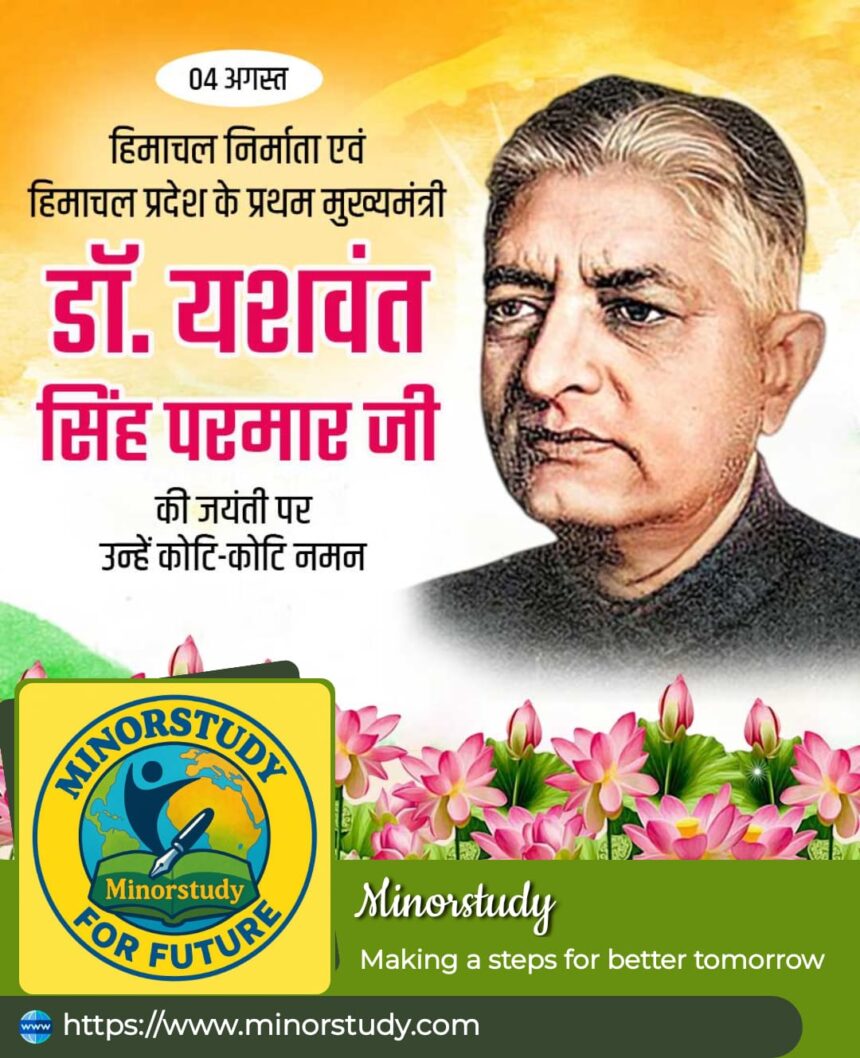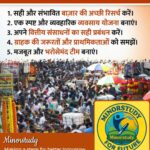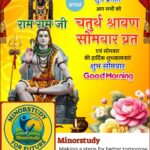🌄 Introduction: The Gentle Architect of Himachal Pradesh
In the world of politics, few names resonate with the depth of vision, simplicity, and love for people as Dr. Yashwant Singh Parmar Ji. Revered as the architect of modern Himachal Pradesh, he wasn’t just a politician—he was a visionary, social reformer, and guardian of hill culture.
- 🌄 Introduction: The Gentle Architect of Himachal Pradesh
- 🕰️ History and Early Life
- 📜 Timeline of Major Events in Dr. Parmar’s Life
- 🔥 7 Inspiring Truths About Dr. Yashwant Singh Parmar Ji
- 1. Father of Himachal Pradesh
- 2. Revolutionary Scholar with a People’s Heart
- 3. Torchbearer of Education and Women Empowerment
- 4. Simple Lifestyle, Rich Ideals
- 5. Strong Advocate for Tribal and Backward Regions
- 6. Unifier of Diverse Cultures
- 7. Visionary Leadership with No Scandals
- 🧾 Interesting Facts
- 🙋♂️ Frequently Asked Questions (FAQs)
- 🎉 Observance and Commemoration
- 🧠 Importance in Daily Life
- 💎 Key Takeaways
- 🧭 Conclusion: A Leader Who Listened, Led, and Loved
From battling discrimination against hill areas to laying the foundation of an inclusive and developed Himachal Pradesh, Dr. Parmar’s legacy is rich, deep-rooted, and emotionally moving.
Let us explore the 7 inspiring truths about his life that go far beyond what history books typically mention.
🕰️ History and Early Life
Dr. Yashwant Singh Parmar was born on 4th August 1906, in Chanalag village, Sirmaur district, Himachal Pradesh. He hailed from a Rajput family, known for integrity and service.
🎓 He pursued his education at Forman Christian College, Lahore, and later obtained a Doctorate in Law from Lucknow University.
His doctoral thesis, “Polyandry in the Himalayas”, was a groundbreaking socio-legal work that later became influential in policy-making.
His early life revolved around education, rural welfare, and social upliftment, which shaped his leadership vision later.
📜 Timeline of Major Events in Dr. Parmar’s Life
| Year | Event |
|---|---|
| 1906 | Born in Chanalag, Sirmaur |
| 1920s-30s | Completed education and earned a Ph.D. in Law |
| 1948 | Joined administrative service in Himachal Pradesh |
| 1952 | Became first Chief Minister of Himachal Pradesh |
| 1956 | Resigned due to the merger of hill areas into Punjab |
| 1963 | Returned as CM and led the movement for statehood |
| 1971 | Himachal Pradesh attained full statehood |
| 1977 | Retired from active politics |
| 1981 | Passed away on 2nd May |
🔥 7 Inspiring Truths About Dr. Yashwant Singh Parmar Ji
1. Father of Himachal Pradesh
Dr. Parmar is rightly called the “architect and father of Himachal Pradesh.” He:
Fought against the Punjab Reorganisation Act which tried to merge Himachal with Punjab.
Advocated for autonomy and separate identity for the hill people.
Played a pivotal role in making Himachal a full-fledged state in 1971.
📌 Significance: Without his persistence, the cultural and political identity of Himachal could have been diluted.
2. Revolutionary Scholar with a People’s Heart
His research on polyandry and Himalayan tribes was not academic in isolation. He deeply understood the struggles, traditions, and mindset of Himachali society.
His thesis influenced land reforms and tribal rights policies.
He helped bridge the gap between tradition and modernity.
📌 Fun Fact: His works are still cited in anthropological studies of the Himalayas.
3. Torchbearer of Education and Women Empowerment
Dr. Parmar believed that true freedom lay in literacy and empowerment.
Opened schools in remote hill regions.
Promoted girls’ education, especially in conservative rural areas.
Established Himachal Pradesh University in 1970.
📌 Impact: Today, Himachal ranks high in literacy and gender equity, thanks to his foundations.
4. Simple Lifestyle, Rich Ideals
Despite being in power, Dr. Parmar lived a humble life.
He often traveled on foot to meet people in remote areas.
Refused unnecessary luxuries.
Was easily approachable by villagers and farmers.
📌 Emotional Connection: He wasn’t a ruler; he was seen as “Yashwant Bhaiya”, a brother to his people.
5. Strong Advocate for Tribal and Backward Regions
He raised the voice of backward hill areas, ensuring they received:
Special financial packages
Separate administrative attention
Infrastructure for roads, schools, and health
📌 Legacy: Many tribal regions of HP owe their early development to his targeted efforts.
6. Unifier of Diverse Cultures
Himachal Pradesh is culturally diverse—with Pahari, Tibetan, Punjabi, and tribal influences.
Dr. Parmar focused on cultural preservation.
Promoted folk arts, local languages, and regional identity.
📌 Significance: This ensured that modern development did not wipe out ancient traditions.
7. Visionary Leadership with No Scandals
In today’s politics often marred by scams and self-interest, Dr. Parmar stands as a spotless figure.
No corruption charges.
No power abuse.
A life entirely dedicated to public welfare and democratic values.
📌 Message: He’s an ideal role model for present-day politicians.
🧾 Interesting Facts
He was a devout Gandhian and followed principles of ahimsa and service.
The town of Parmarth in Solan was named to honor his contributions.
Himachal’s statehood day (25 January) celebrations always recall his legacy.
🙋♂️ Frequently Asked Questions (FAQs)
Q1. Why is Dr. Yashwant Singh Parmar called the Father of Himachal Pradesh?
Because he led the political and administrative efforts that resulted in separate statehood for Himachal Pradesh in 1971.
Q2. What was his education background?
He earned a Ph.D. in Law, with a focus on social customs like polyandry in Himalayan society.
Q3. What were his political ideals?
He followed Gandhian socialism, decentralization, and was anti-merger with Punjab.
Q4. When did he become Chief Minister?
First in 1952, then again in 1963 until his retirement in 1977.
Q5. How is his legacy preserved today?
Through educational institutions, museums, roads, and public commemorations, especially in Himachal.
🎉 Observance and Commemoration
Every year, on his birth anniversary (4th August) and death anniversary (2nd May):
Government events are held across Himachal.
Students write essays and participate in debates.
Himachalis on social media flood the day with tributes and quotes.
📌 Wishing Message:
“🌸 On this day, we bow to the wisdom and courage of Dr. Yashwant Singh Parmar Ji—a true servant of the people. May his values continue to guide us all. 🙏🇮🇳”
🧠 Importance in Daily Life
Dr. Parmar’s work still affects millions daily:
Roads to remote villages? He started the projects.
Schools for girls in hill towns? He envisioned them.
Special attention to backward areas? His advocacy led to it.
His legacy is not in statues—but in better lives, empowered minds, and proud citizens.
💎 Key Takeaways
Dr. Parmar’s leadership was visionary, clean, and people-centric.
He fought not for power, but for identity, dignity, and autonomy.
He remains an unforgettable role model in India’s democratic history.
🧭 Conclusion: A Leader Who Listened, Led, and Loved
Dr. Yashwant Singh Parmar Ji’s life is not just political history—it’s a life lesson. His simplicity, intellectual brilliance, and grassroots approach define what leadership truly means.
In a world craving genuine leaders, he stands tall, unshaken, and deeply respected.
His story reminds us that real power lies in service, and real success lies in upliftment.
May his legacy continue to shine, guiding young minds and leaders in India and beyond.








